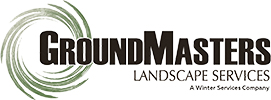
As a commercial property owner or manager, maintaining the property’s appearance is an essential task. Not only does a clean, beautiful property draw in more customers, but customers are more likely to spend more because they can tell you’re putting in both time and effort into their customer experience. As we’re heading into springtime, now is a perfect time to prepare for another year of commercial lawn care.
Mowing and caring for commercial properties tends to be a much bigger investment than mowing residential yards, both in terms of lawn area and the time put into both mowing and general lawn care.
Here are things to keep in mind when mowing and caring for a commercial property that will give your lawn the best chance to thrive.
Tips to Keep Your Commercial Property’s Lawn Looking Sharp
Cut the Right Amount – At the Right Time
When maintaining a commercial landscape, cutting the grass when it “looks like it needs it” doesn’t cut it. Setting up a mowing schedule is one of the best things you can do for your lawn. The general rule of thumb is to mow once every week or two, but this can change depending on a few conditions. The type of grass your lawn has, the time of year, the amount of water and fertilizer you give it – all of these can affect your mowing schedule.
Grass is healthiest when it’s routinely cut to the right height. Letting grass grow too high means that the lower parts won’t get enough sunlight, while cutting it too low can kill it outright. Cutting too much at one time can also damage your grass – it’s recommended to cut only 1/3 of the grass height at one time (i.e. if your grass is 3″ high, cut no more than 1″) Cutting the grass regularly also helps with weed and pest control, ensuring your lawn stays healthy.
Have the Right Mower for the Job
The size of your property should dictate the size of your lawn mower. It’s important to consider the amount of time it will take to mow your lawn with certain mowers. Smaller lawns can be easily maintained with a small riding mower or even a push mower, but large properties will usually require something bigger to cut them quickly and efficiently. Zero-turn mowers have become the preferred choice for commercial landscape mowing due to their speed, precision turning, and ease of use.
If your property has large fields or vacant lots adjacent, it’s also important to mow them regularly. A large, unkempt lot right next to your business can really detract from your curb appeal. Zero-turns and even mowers that are pulled behind tractors are typically the best solution for taking care of large areas of grass quickly.
Mowing on Slopes
Depending on your property’s layout, you may have hills, ditches, or other steep slopes in your landscape. Keeping these areas maintained is crucial for water runoff, pest control, and the overall appearance of your property. However, it can be difficult – or even dangerous – to try and trim these areas. It’s important to test slopes before tackling them to make sure you don’t run the risk of tipping over or sliding down.
Zero-turn riding mowers are considered to be the safest bet for mowing steep slopes due to their low center of gravity and overall design. Steep slopes are best mowed in an up-and-down pattern, using a low gear.
Edging and Trimming
Crisp, clean edges along curbs, walkways, and flowerbeds really help to define your landscape and give it a professional look. The best tool to use for edging your property is a lawn edger (aka edge trimmer). They use a vertical spinning blade to create a small cut between your lawn and other landscape features and clearly define the edges. Lawn edgers can either be motorized or manual-driven. Motorized edgers are a sure bet for properties with a lot of edges to cut, while manual edgers are a cheaper option and can work well for smaller properties.
Trimming around bushes, trees, and other areas where your mower can’t reach can also have a drastic effect on your curb appeal. When using a trimmer, it’s important to match the height of the grass, and not to get too eager. Scalping your grass or nicking the trunks of trees, shrubs, or other plants does your lawn and plants more harm than good.
Grass and Soil Care
While not directly related to lawn mowing, taking good care of both your lawn’s soil and roots is still a vital part of any thriving commercial lawn. Ensuring that your lawn’s roots can get the water, nutrients, and oxygen they need is one of the most surefire ways to have green, thick, and healthy grass.
Aerating should be done at least once a year in the spring and/or fall, while dethatching should be done when your lawn’s natural layer of thatch is starting to take a toll on its overall health (usually when it’s about 1″ thick).
It’s best to fertilize a few times a year – early spring, late spring, summer, and fall. Keeping your lawn nourished throughout the warmer seasons will ensure that it thrives while also preparing it for winter.
Looking For Professional Lawn Care Services Your Denver Commercial Property?
Our team of pros at GroundMasters Landscape Services has the equipment and expertise needed to maintain your commercial property’s lawn and ensure it thrives with year-round care.
In addition to our lawn care services, we also offer the full spectrum of seasonal landscaping and grounds management services – including sprinkler installation & maintenance, tree & shrub care, and landscape enhancements. We also offer storm cleanup and snow removal services for when the weather takes a turn for the worst. To see what GroundMasters can do for your commercial property, gives us a call today at (303) 750-8867 or get in touch with us online today to get started.
